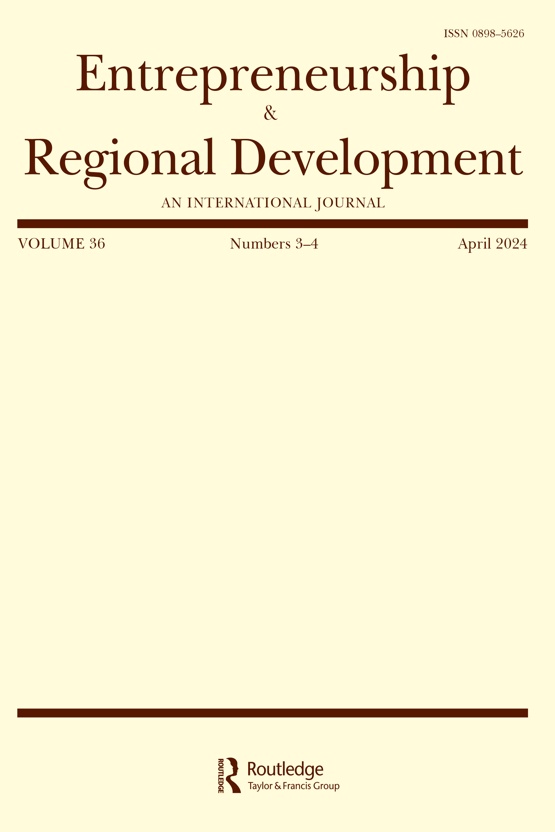学习空间在创业教育中的重要性:引入topopaxis概念
IF 3.6
1区 经济学
Q2 BUSINESS
引用次数: 2
摘要
对创业教育的研究已经探索了内容、受众和教学法,但在学习的空间维度上仍有很多有待研究——即,在哪里教授创业精神,这对使用的教学法有何影响,以及对学习的影响。我们试图加强理解创业教育(EE)中的学习空间和空间维度的理论基础。我们扩展了Fayolle和Gailly的教学模式框架,根据最近体验式学习和设计教学法的教学趋势,开发了一个将场所和教学法与EE学习空间联系起来的概念模型。该模型关注基于团队的情感表达中两种类型的学习空间的位置-如何,topopaxis,这两种学习空间的理论基础是与团队“领域”和利益相关者接近相关的社会互动的空间维度。该模型提出,情感表达项目中的拓扑行为将以团队关系建立、概念发展和学生身份形成的形式影响学习过程和结果。为了说明该模型的适用性,我们分析了两个情感表达项目的案例,它们都是在工作室环境中进行的,但在拓扑结构和学习结果上有所不同。最后,我们提出了对情感表达研究和创业项目设计的启示。本文章由计算机程序翻译,如有差异,请以英文原文为准。
How learning spaces matter in entrepreneurship education: introducing the concept of topopraxis
ABSTRACT Research into entrepreneurship education has explored content, audience and pedagogy but much is still to be studied when it comes to the spatial dimensions of learning – that is, where entrepreneurship is taught, how this matters for pedagogies used, and the implications for learning. We seek to strengthen a theoretical foundation for understanding learning spaces and the spatial dimensions in entrepreneurship education (EE). We extend the teaching model framework by Fayolle and Gailly, to develop a conceptual model that relates place and pedagogy into learning spaces in EE, informed by recent pedagogical trends in experiential learning and design pedagogy. The model concerns the where-how, the topopraxis, of two types of learning spaces in team-based EE that are grounded in theory on the spatial dimensions of social interaction pertaining to team ‘territory’, and stakeholder proximity. The model proposes that topopraxis in EE programmes will impact learning processes and outcomes in the form of team relationship building, conceptual development , and student identity formation. To illustrate the applicability of the model, we analyse two cases of EE programmes, both conducted in studio environments, but differing in topopraxes and learning outcomes. Finally, we offer implications for EE research, and for the design of entrepreneurship programmes.
求助全文
通过发布文献求助,成功后即可免费获取论文全文。
去求助
来源期刊
CiteScore
7.90
自引率
10.70%
发文量
52
期刊介绍:
Entrepreneurship and Regional Development is unique in that it addresses the central factors in economic development - entrepreneurial vitality and innovation - as local and regional phenomena. It provides a multi-disciplinary forum for researchers and practitioners in the field of entrepreneurship and small firm development and for those studying and developing the local and regional context in which entrepreneurs emerge, innovate and establish the new economic activities which drive economic growth and create new economic wealth and employment. The Journal focuses on the diverse and complex characteristics of local and regional economies which lead to entrepreneurial vitality and endow the large and small firms within them with international competitiveness.

 求助内容:
求助内容: 应助结果提醒方式:
应助结果提醒方式:


